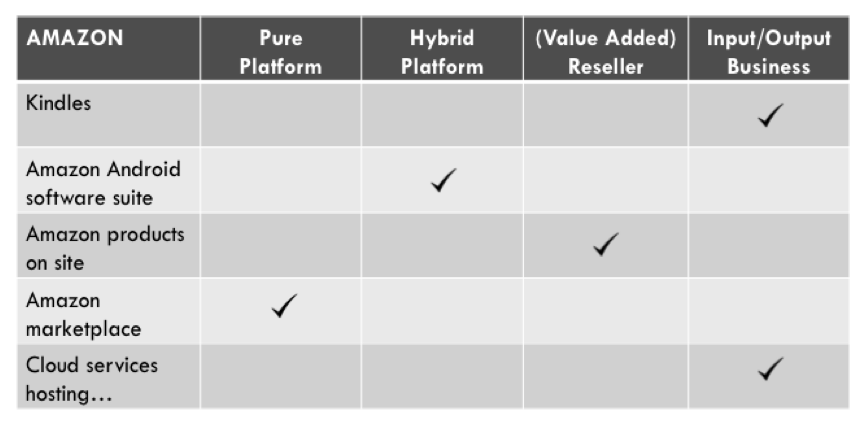What are the characteristics of these companies fast replacing traditional businesses?
As you know we like platform businesses, and proposed a generic definition in a previous post. Out of the list of the most valuable brands in the world (or firms with the largest market capitalisation for that matter) we believe that many exhibit characteristics of platform businesses.
Here is an updated ranking of the top 25 most valuable brands in the world in 2014 to refresh your memory.
BrandZ™ Top 100 Most Valuable Global Brands 2014
Source: Millward Brown (http://www.millwardbrown.com/brandz/2014/Top100/Docs/2014_BrandZ_Top100_Chart.pdf)
The list is slightly different from the 2013 version you may have seen in a previous post (and this list is from an agency call Millward Brown rather than Interbrand) but the point is the same… many of the largest and most successful companies in the world exhibit strong platform characteristics. In fact, only Marlboro, Coca-Cola and McDonalds in the top ten are what we would call “traditional” businesses. Google, Apple, IBM, Microsoft, Visa, AT&T and Amazon have all exhibit strong platform characteristics… but not all of them are “pure platforms”.
Is your business model a platform one?
For some companies like eBay (number 20 with 20% growth in the 2013 Interbrand rankings and number 61 in the BrandZ one) the answer is straightforward. This is clearly a platform business that attracts critical masses of different groups (buyers and sellers) to match them (through search), connect them (to exchange information before transacting) in order to enable a transaction (buying/selling). These are what we call “pure” platform businesses and many high growth start-ups able to scale up very rapidly follow such a model (airbnb, uber, etc.).
Companies like Visa or American Express also operate as platform businesses (recruiting merchants on one side to accept their cards and customers to pay with them on the other side of the market) but as payment systems they have less developed matching and connecting features (these are automated as part of the payment process). Amex however mostly recruits its merchants and card users directly while Visa uses merchant acquiring and issuing banks to do that.
We tend to distinguish between “pure” and “hybrid” platforms based on the degree of mediation between sides of the market (marketplaces such as eBay connect buyers and sellers directly and are therefore pure platforms while some other platform businesses need to attract communities –such as app developers- that will in turn develop products that can be put on the platform –we call these hybrid).
Some business model definitions
But what about companies like Amazon?… Some of their activities look quite plain vanilla. For example Amazon distributes lots of goods (on-line) which looks like the resell model above. It also sells cloud based processing power which looks like a traditional business (with arguably an innovative product). It also has a “pure platform” activity that connects external merchants with buyers for products that they do not distribute themselves.
From business models to ecosystems…
In fact let’s map the main activities of Amazon against the business model definitions we discussed above…
Amazon ecosystem architecture
It looks like Amazon has designed a self-reinforcing ecosystem that uses and leverages platform business models where they make sense (to manage diversity, a long tail, etc.). When Amazon needs more control over the product proposition more traditional business models are used. Amazon is trying to get the best of both world by combining the reach of platforms with the control of simple distribution models in order to be a one stop shop (e.g. you don’t need to go anywhere else, we either have it directly or one of our partners has). The recent addition of the Amazon ‘Fire’ phone with the firefly app that recognises anything you point it at (including films and music!) and takes you to the amazon site is a good illustration of this self reinforcing ecosystem strategy. Such an ecosystem is not only more efficient overall but it is also more sticky (e.g. leaving the ecosystem is more difficult so economists talk about “lock ins” and “switching costs”). Microsoft is also a good example of a hybrid platform that has for many years built its ecosystem around an operating system able to attract many developers and has branched out into tablets, mobiles, etc.
Many of the fast growing businesses currently replacing long established firms in the rankings have designed such self-reinforcing, and often platform based, ecosystems. For example Apple manufactures its own products (Input/Output), resells lots of products (including music and video content), has a strong operating system and app stores at the heart of its model (hybrid platforms). The resulting ecosystem is significantly more powerful than the sum of the parts… so an excellent mobile phone with features far superior to the iPhone but let down by a sub par supporting ecosystem (with apps, etc.) doesn’t stand a chance in today’s marketplace. In order to take on the iPhone competitors need to develop a similarly strong ecosystem of reinforcing business capabilities. Goggle’s Android comes to mind but Nokia and Blackberry both realised too late the extent of this competitive shift in ecosystem.
In our next post we will look in more details at the underlying economics powering the platform ecosystem revolution we are predicting…



